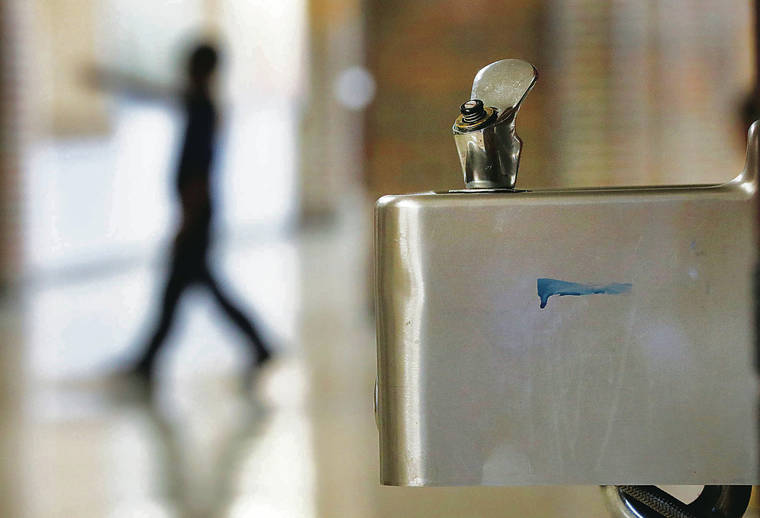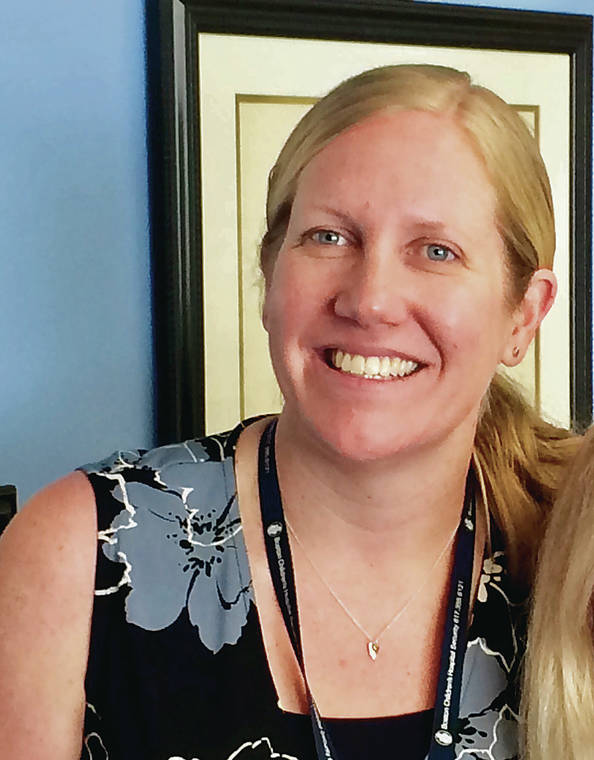The maximum level of lead in drinking water should be zero, because even very low exposures to the toxic heavy metal can cause nervous system damage, learning disabilities and other health problems in infants and children, according to the U.S. Environmental Protection Agency lead-in-drinking-water website Opens in a new tab.
“This has been a big issue since the Flint, Mich., crisis (where in 2016, thousands of children were found to have been exposed to high levels of lead leaching from old water pipes),” said Dr. Diana Felton, state toxicologist in the Hazard Evaluation and Emergency Response Office of the Hawaii state Department of Health.
Hawaii’s public schools have never been comprehensively tested for lead in drinking water, but now it’s going to start happening as early as spring, she said, thanks to an EPA grant of $222,000 to help fund DOH’s Environmental Health Administration in identifying sources of lead in drinking water in schools and child care facilities.
“EPA is pleased to support Hawaii in its efforts to detect and reduce lead in drinking water, thereby protecting children’s health,” EPA Pacific Southwest Regional Administrator John Busterud stated Wednesday in a news release; the state will contribute an additional $696,000 from the Drinking Water State Revolving Fund, a federal-state partnership under the Safe Drinking Water Act.
Water will be tested for lead at drinking fountains and other outlets at 106 Department of Education schools and 229 Department of Human Services licensed child care facilities. Participating schools will include those serving younger children, those with more than 50% of students receiving subsidized lunch, and schools built before 1988, which are more likely to contain lead in pipes and fixtures.
Unlike Flint and many other mainland cities, where municipal water lines often contained lead, “our municipally supplied water in Hawaii has not traditionally had significant levels of lead, so we’ll really be looking at fixtures and piping as potential sources,” Felton said.
She noted that in 2008, DOH tested the drinking water at 946 licensed child care centers across the state and found that less than 1% of the samples were above the EPA’s then-action level of 20 parts per billion, and corrective actions were taken.
The current action level for lead is 15 ppb, Felton said, and if that level or higher is found in an institution’s drinking water in the upcoming study, the first step will be to close off the tap, followed by retesting to verify the result and then replacing the source.
“We will test levels down to 5 ppb but will take action at 15 ppb and later. If we have additional resources, we’ll go back and address those levels,” she added.
While the threshold for lead in children’s blood has been lowered to 5 from 10 micrograms per deciliter over the past 20-odd years, “in Hawaii we still have a significant proportion of our population that ends up with childhood lead poisoning,” Felton said, with 0.8% to 1.2% of children registering levels higher than 5 mg/dL per year.
Out of 17,664 Hawaii children tested in 2019, about 182 had lead levels over 5 mg/dL, “but we don’t test everyone,” she said.
Medicaid, Quest and Kaiser Permanente require testing of all member children between ages 1 and 2, but the rest of Hawaii’s children are pre-screened by pediatricians, using a DOH questionnaire, for risk factors that would make them eligible for testing, Felton said.
She added, “I think we’re missing a fair number of kids.”
That is one reason why DOH and its partner agencies are “hoping to start testing drinking water as soon as we possibly can,” she said.
FOR MORE INFORMATION
>> lead.hawaii.gov Opens in a new tab
>> epa.gov/ground-water-and-drinking-water/basic-information-about-lead-drinking-water Opens in a new tab
Opens in a new tab




